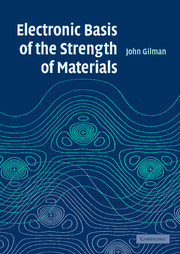Section I - Introduction
Published online by Cambridge University Press: 14 August 2009
Summary
The central property of a solid is its strength. Upon this property several engineering disciplines have been built. First came the construction of shelter, and of ordnance for hunting and war, as well as tools for domestic use. Then came civil, mechanical, electrical, and chemical engineering; followed by electronics, aerospace, and now micro-device, optical, and biomedical engineering. Major civilizing events have resulted from advances in the strength of materials. The most dramatic was the industrial revolution which resulted directly from the jump in the strength of structures introduced by inexpensive steel. Before that, mining, weaving, military ordnance, agriculture, sailing, and various crafts advanced as material strengths increased. Inexpensive steel transformed the ways in which bridges, tunnels, and buildings were built and increased their sizes by orders of magnitude. It allowed fast, intricate, manufacturing machinery to be made such as that used for making textiles, for agriculture, for printing, and for manufacturing objects. The power levels of steam and gas engines were increased ten-thousand-fold when it became available. This revolutionized transportation on land through railways, and at sea through steam-powered ships. The unprecedented strength, ductility, and economy of steel affected every aspect of the way the world functioned. Unfortunately, it also led to increased destruction in war.
More recently society has been impacted in a major way by the inexpensive air travel that is a direct result of the remarkable strength of nickel–aluminum alloys at high temperatures.
- Type
- Chapter
- Information
- Electronic Basis of the Strength of Materials , pp. 1 - 4Publisher: Cambridge University PressPrint publication year: 2003



